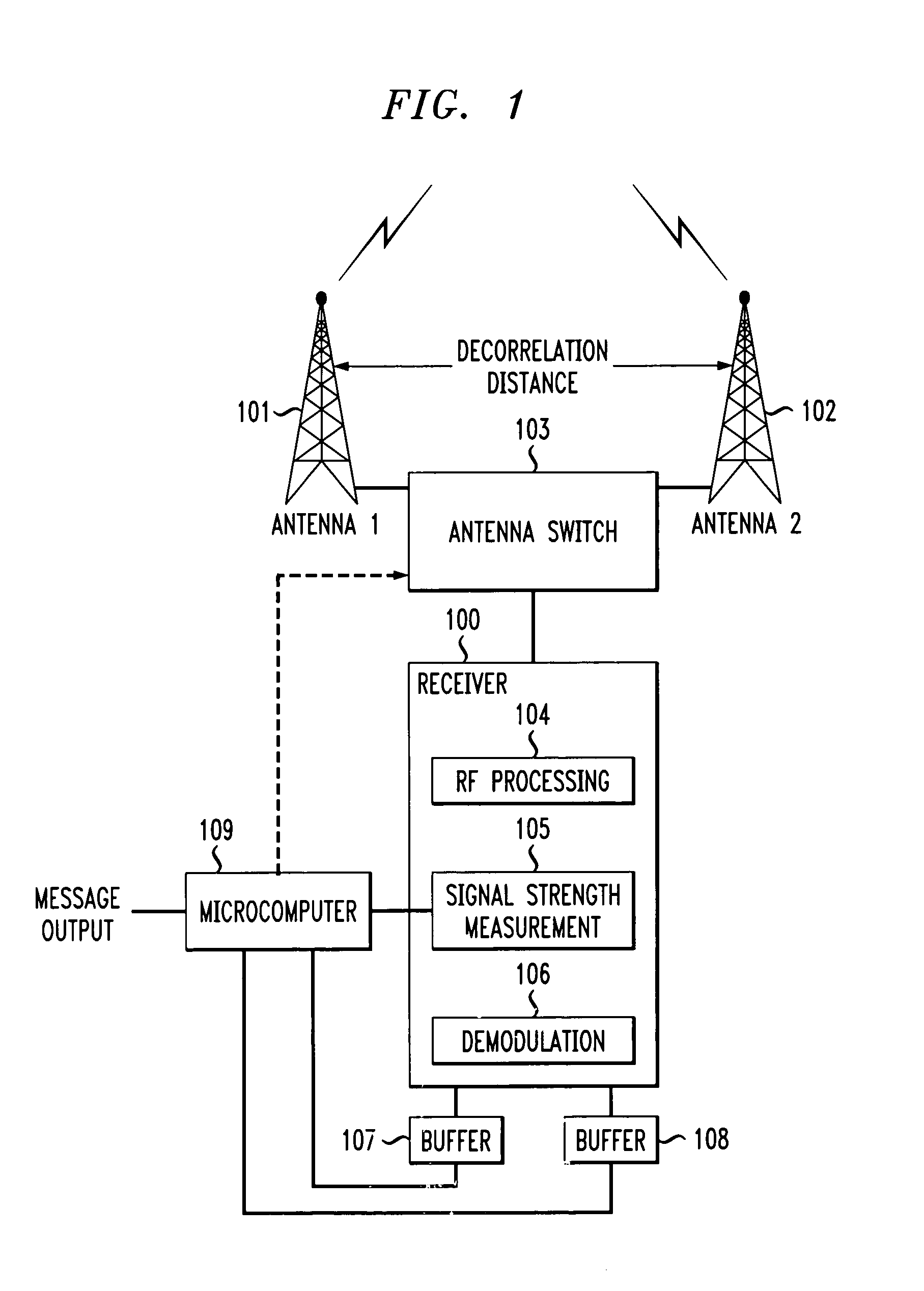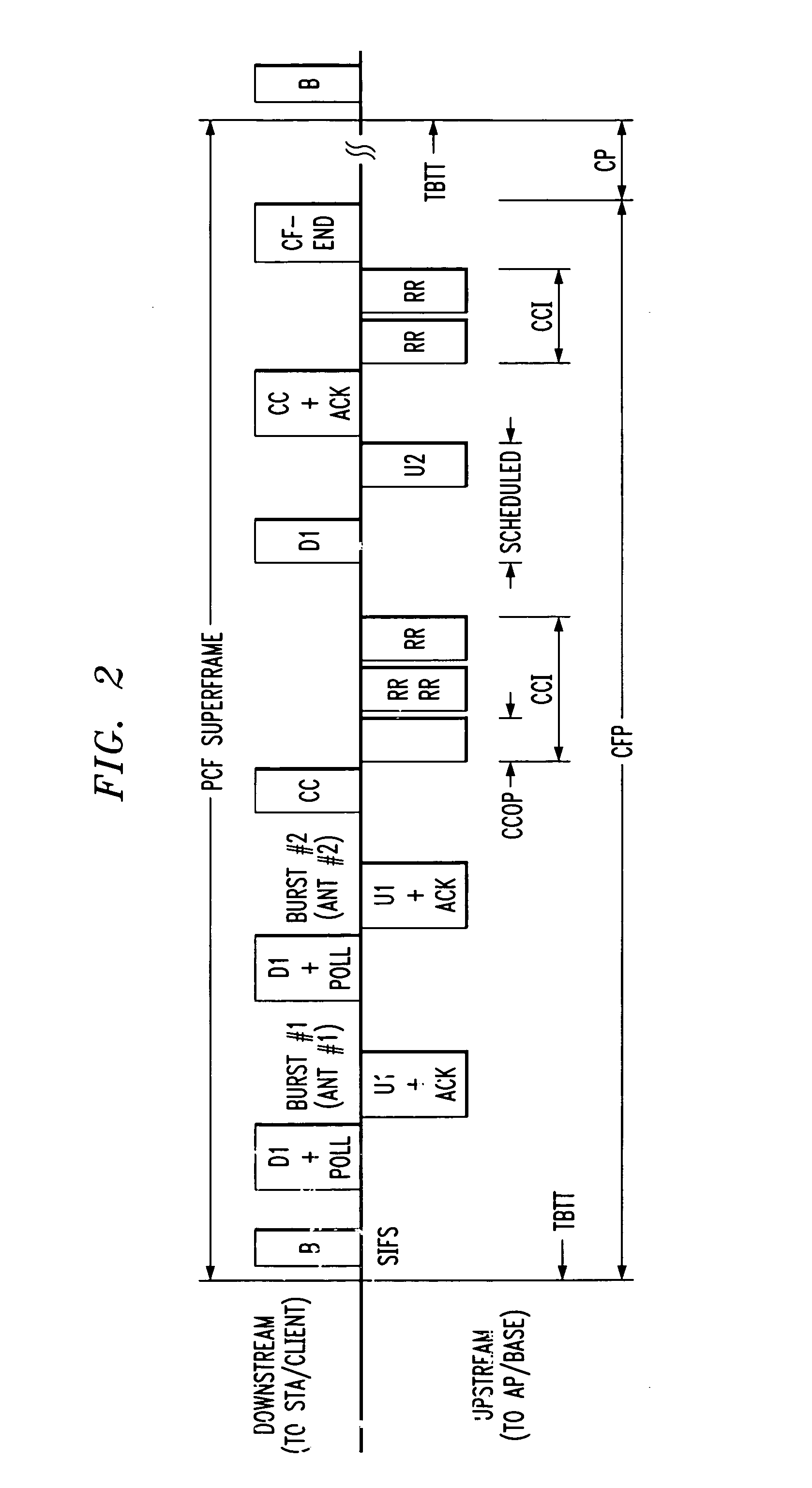Protocol assisted switched diversity of antennas
a technology of switched diversity and protocol assisted antennas, applied in the direction of error prevention/detection by transmission repeat, multiplex communication, electromagnetic wave modulation, etc., can solve the problems of inability to cooperate with mac protocols, high cost and difficulty in low power environment, and further subject to many variations in signal strength of signal propagation. to achieve the effect of improving the performance of radio receivers
- Summary
- Abstract
- Description
- Claims
- Application Information
AI Technical Summary
Benefits of technology
Problems solved by technology
Method used
Image
Examples
Embodiment Construction
[0015]In an examplary two-antenna, one-receiver embodiment as shown in FIG. 1, receiver (100) is connected to antennas (101 and 102) by an RF switch (103). The receiver consists of a conventional analog RF processing (104), signal strength measurement (105) and digital demodulation (106) facilities. The digital output of the receiver, consisting of message symbols and associated signal strength values, is connected to a buffer memory arrays (107 and 108). Control of RF switch 103 is accomplished with the aid of microcomputer (109) which executes a stored program implementing the MAC protocol. Based on the state of the protocol, the RF switch control will be operated in the conventional mode (switching based on an RF signal strength quality metric as described above), or in the multiple burst mode (where it is switched to ensure that a particular burst is received by a particular antenna.
[0016]For the purposes of this example, the base station will be assumed to have at least combina...
PUM
 Login to View More
Login to View More Abstract
Description
Claims
Application Information
 Login to View More
Login to View More - R&D
- Intellectual Property
- Life Sciences
- Materials
- Tech Scout
- Unparalleled Data Quality
- Higher Quality Content
- 60% Fewer Hallucinations
Browse by: Latest US Patents, China's latest patents, Technical Efficacy Thesaurus, Application Domain, Technology Topic, Popular Technical Reports.
© 2025 PatSnap. All rights reserved.Legal|Privacy policy|Modern Slavery Act Transparency Statement|Sitemap|About US| Contact US: help@patsnap.com



